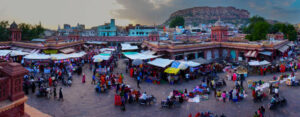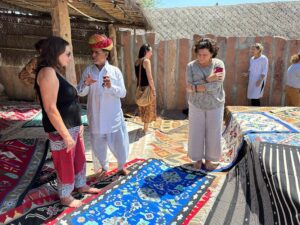– Top 10 Must-Visit Attraction Jodhpur –
1.Mehrangarh Fort
2.Jaswant Thada
3.Umaid Bhawan Place
4.Mandore Gardens
5.Clock Tower (Ghanta Ghar)And Sardar Market
6.Rao Jodha Desert Rock Park
7.Toorji KA Jhalra (stepwell)
8.Mehrangarh Museum Trust Audio Guide Walk
9.Bishnoi Village
10.Machiya Safari
1. Mehrangarh Fort Top 10 Must-Visit Attraction Jodhpur
- Mehrangarh Fort Top 10 Must-Visit Attraction Jodhpur stands as an indomitable sentinel over Jodhpur, its colossal walls rising stark against the vivid blue skies of Rajasthan. This formidable fortress, built in the 15th century by Rao Jodha, founder of Jodhpur, encapsulates centuries of Marwar’s history within its imposing walls. As you ascend its winding paths, flanked by massive gates and bastions, the fort unfolds like a living chronicle of Rajput valor and architectural splendor Top 10 Must-Visit Attraction Jodhpur.
Inside, the fort’s palaces—such as Moti Mahal, Phool Mahal, and Sheesha Mahal—gleam with intricate carvings, stained glass windows, and ornate chambers where the Rajput rulers once held court. The fort’s museum houses a treasure trove of artifacts: from opulent palanquins and royal cradles to arms and armor that echo with tales of battles fought and won. The panoramic vistas from Mehrangarh Fort are unparalleled, offering sweeping views of the Blue City below, a labyrinth of azure-hued houses that contrast starkly against the arid landscape.Top 10 Must-Visit Attraction Jodhpur.
Key Attractions Within Mehrangarh Fort
1. Moti Mahal (Pearl Palace)
Moti Mahal, or the Pearl Palace, is renowned for its exquisite glass windows and intricate designs. It was once the residence of the Maharajas and offers stunning views of the city below.
2. Phool Mahal (Flower Palace)
Phool Mahal, the Flower Palace, is a splendid chamber adorned with intricate gold filigree work and mirror embellishments. It served as the royal court for entertainment and celebrations.
3. Sheesh Mahal (Mirror Hall)
Sheesh Mahal, the Mirror Hall, is a masterpiece of mirror work where the walls and ceilings are adorned with intricate mirrors that reflect candlelight beautifully. It’s a must-see for its mesmerizing craftsmanship.
4. Chamunda Mataji Temple
Located within the fort complex, Chamunda Mataji Temple is an ancient shrine dedicated to Goddess Chamunda, the Kuladevi (family deity) of the Rajput rulers of Jodhpur. Visitors can experience spiritual tranquility amidst the fort’s bustling surroundings.
| • Timing: | • 9:00 AM to 5:00 PM (Closed on major holidays) |
| • Entrance Fee: | • INR 100-600 (varies for Indian and foreign tourists) |
| • Location: | •Located in Jodhpur city, accessible via Mehrangarh Road. |
| • Safety & Security: | • Watch your step on the fort's steep paths; guided tours recommended for historical insights. |
| • Weather: | • Best visited in winter (October to March) to avoid extreme heat. |
2. Jaswant Thada - Must-Visit Attraction in Jodhpur
- Nestled amidst serene gardens near Mehrangarh Fort, Jaswant Thada is a poignant marble memorial dedicated to Maharaja Jaswant Singh II. Constructed in the 19th century by his son Maharaja Sardar Singh, this architectural gem exudes an ethereal beauty, its milky-white facade gleaming under the Rajasthan sun.
As you approach Jaswant Thada, Top 10 Must-Visit Attraction Jodhpur the intricate lattice work and delicate carvings on its marble walls immediately captivate. Inside, the cenotaph houses exquisite portraits of the Rathore rulers and ornamental cenotaphs adorned with marble jalis (perforated screens) that filter sunlight into the quiet chambers. The memorial’s serene lake, framed by lush gardens and surrounded by the Aravalli hills, offers a tranquil sanctuary away from the city’s bustle Top 10 Must-Visit Attraction Jodhpur.
Key Attractions
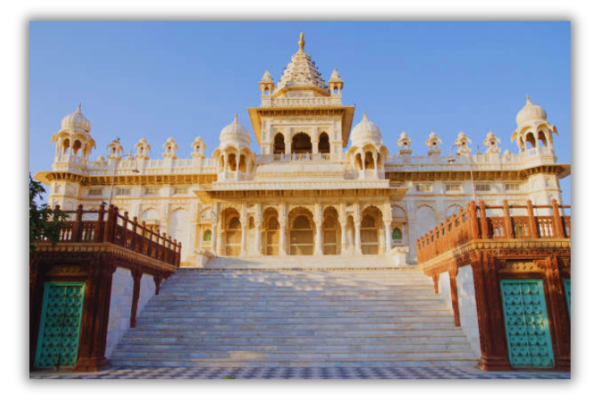
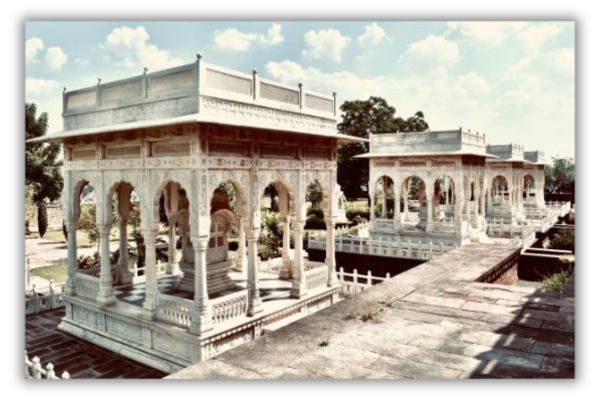
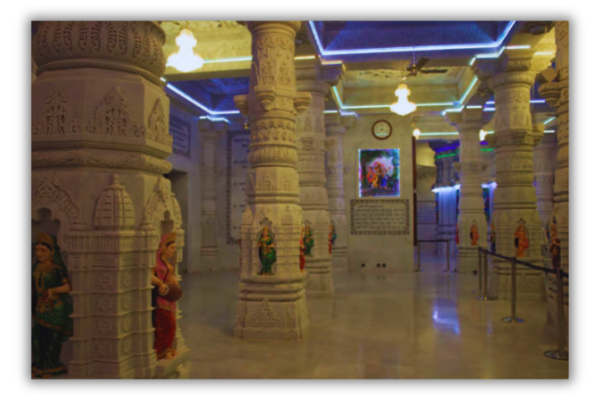
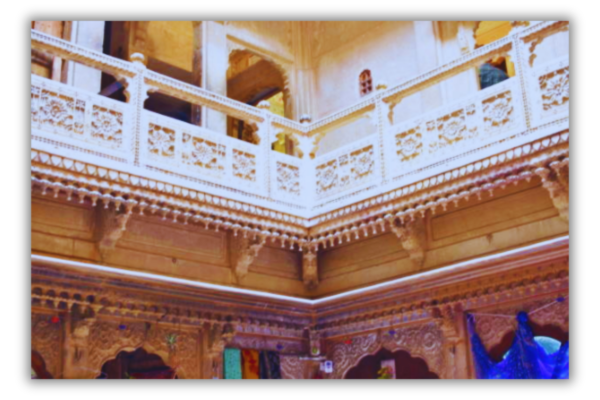
1.Architecture and Design:
- Intricate marble lattice screens (jalis) filter sunlight, creating a mesmerizing play of light and shadow.
2. Marble Memorials:
- Houses marble cenotaphs of other royal family members, adorned with delicate carvings showcasing Rajasthani craftsmanship.
3.Scenic Views:
- Surrounded by lush gardens and overlooking Devi Kund Lake, offering a tranquil ambiance ideal for relaxation and photography.
| • Timing: | • 9:00 AM to 5:00 PM |
| • Entrance Fee: | • NR 30-50 (approx.) |
| • Location: | • Near Mehrangarh Fort, accessible via Lawaran Road. |
| • Weather: | • Enjoy the peaceful white marble architecture year-round; mornings and evenings offer cooler temperatures. |
| • Safety & Security: | • Respect the tranquil atmosphere; photography restrictions inside the cenotaph. |
3. Umaid Bhawan Palace - Top 10 Must-Visit Attraction Jodhpur
- Umaid Bhawan Palace epitomizes the grandeur and opulence of Rajasthan’s royal heritage, standing as a testament to architectural finesse and regal extravagance. Built between 1928 and 1943, this imposing palace is divided into three parts: a museum, a luxury hotel managed by the Taj Group, and the residence of the royal family of Top 10 Must-Visit Attraction Jodhpur.
The palace’s architecture blends Indo-Saracenic and Art Deco styles, characterized by its imposing sandstone facade, domed cupolas, and intricately carved balconies. Inside, the museum offers a glimpse into the lives of the Maharajas, showcasing a splendid collection of artifacts, including vintage cars, weaponry, and memorabilia. The palace’s lush gardens, sprawling over 26 acres, are a tranquil oasis featuring exotic flowers, fountains, and expansive lawns—a perfect setting for leisurely walks or romantic evenings.
Umaid Bhawan Palace isn’t just a monument; it’s a living heritage that continues to enchant visitors with its timeless elegance and unparalleled hospitality. Whether you explore its museum, indulge in a luxurious stay, or simply marvel at its architectural splendor, Umaid Bhawan Palace promises an unforgettable journey into Rajasthan’s royal past.

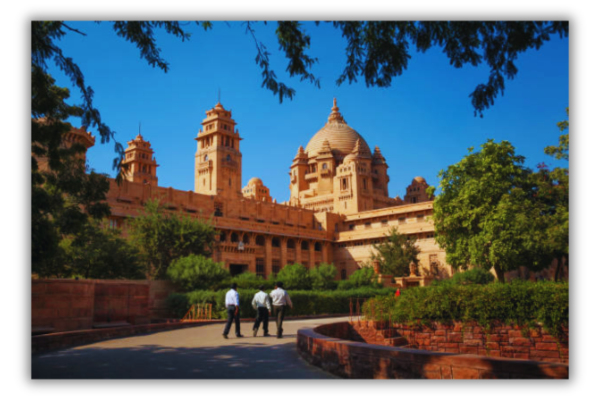
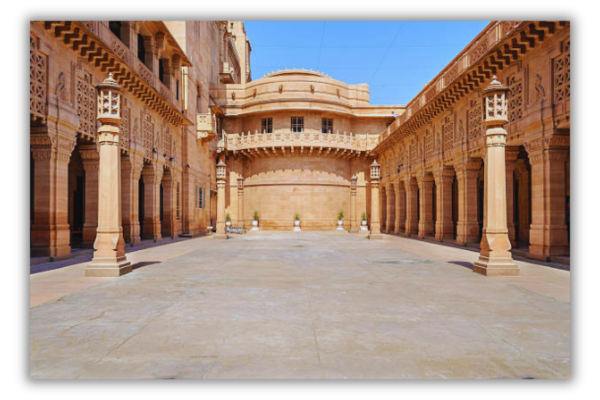
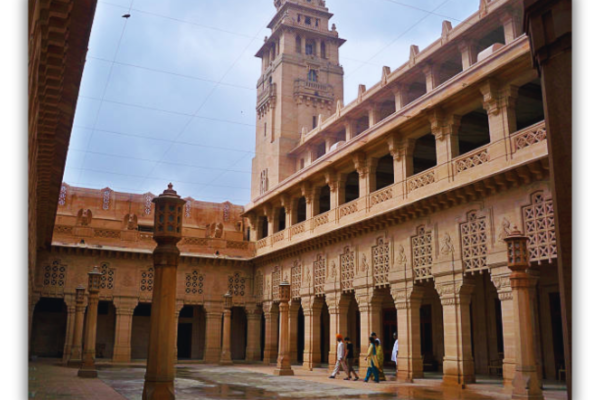
1. Architecture and Design
Umaid Bhawan Palace showcases a blend of Indo-Saracenic and Art Deco architectural styles. The palace was built with sandstone and marble, featuring intricate carvings, grand corridors, and elegant domes that reflect the opulence of the bygone era.
2. Museum
A part of the palace has been converted into a museum that displays artifacts, vintage cars, and memorabilia from the royal era. Visitors can explore the history of the Maharajas of Jodhpur through the palace’s rich collections.
3. Royal Accommodations
A section of Umaid Bhawan Palace functions as a luxury hotel managed by the Taj Group. Guests can experience royal hospitality in luxurious suites adorned with period furniture, modern amenities, and impeccable service.
| • Timing: | • 10:00 AM to 4:30 PM; Palace Hotel: Always open |
| • Entrance Fee: | • INR 30-100 for museum entry; hotel access for guests. |
| • Location: | • Circuit House Road, near Umaid Gardens. |
| • Weather: | • Experience the grandeur of this Art Deco masterpiece year-round; explore the sprawling gardens and architecture during cooler months. |
| • Safety & Security: | • Enjoy the palace's luxury and heritage; adhere to guidelines for guided tours. |
4. Mandore Gardens
- Mandore Gardens, nestled in the historic town of Mandore, serve as a serene retreat steeped in mythology and history. Once the capital of the Marwar region before the establishment of Jodhpur, Mandore is dotted with cenotaphs, temples, and memorials that pay homage to the Rathore rulers.
The gardens, spread across lush green lawns and adorned with flowering plants and trees, provide a picturesque setting for relaxation and exploration. The highlight of Mandore Gardens is the imposing Mandore Fort, with its intricately carved temples dedicated to various Hindu deities. The memorials or “chhatris” of the Rathore rulers, built in red sandstone and marble, stand as architectural marvels against the backdrop of the Aravalli hills.
Visitors can wander through the gardens’ pathways, shaded by ancient trees, and marvel at the artistic craftsmanship displayed in the cenotaphs and temples. Mandore Gardens also host cultural performances and festivals, adding a vibrant touch to its historical charm. Whether you’re a history enthusiast, a nature lover, or seeking a peaceful retreat, Mandore Gardens offers a compelling glimpse into Rajasthan’s rich cultural tapestry.
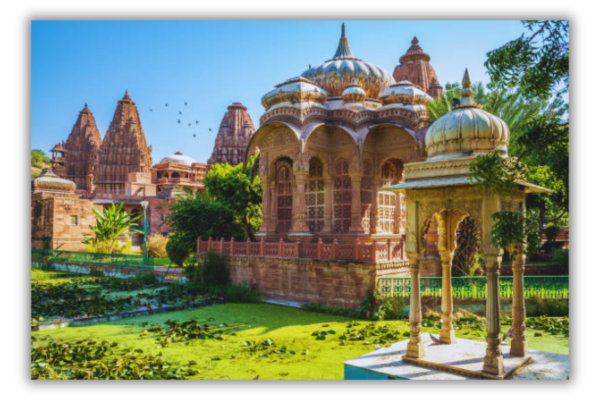
Cenotaphs (Chhatris)
• The cenotaphs in Mandore Gardens are iconic structures made of red sandstone and marble, dedicated to the Rathore rulers of Marwar. They feature intricate carvings and offer a glimpse into Rajasthan's royal heritage- Top 10 Must-Visit Attraction Jodhpur

• Rani Bagh (Queen's Garden)
• Rani Bagh is a meticulously landscaped garden featuring lush greenery and vibrant flowers. It provides a serene setting for leisurely walks and photography amidst natural beauty. Top 10 Must-Visit Attraction Jodhpur

• Cultural Performances and Festivals
• Throughout the year, Mandore Gardens hosts cultural events that showcase Rajasthan's rich cultural heritage. These include traditional music, dance performances, and religious rituals, offering visitors a deeper connection to the region's traditions. Top 10 Must-Visit Attraction Jodhpur
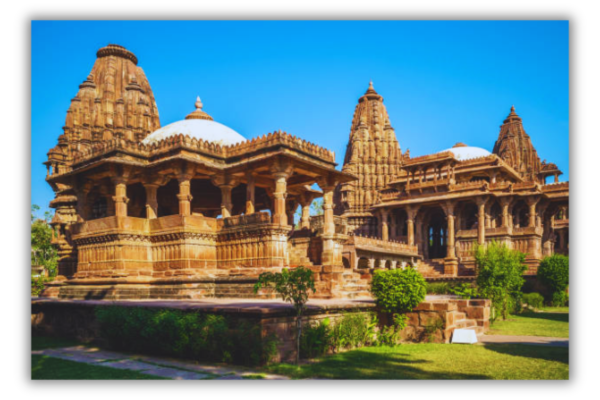
• Mandore Fort
• Mandore Fort, overlooking the gardens, houses beautifully carved temples dedicated to Hindu deities. It serves as a vantage point to admire the Aravalli hills and showcases Rajasthan's architectural finesse. Top 10 Must-Visit Attraction Jodhpur
| • Timing: | • 8:00 AM to 8:00 PM |
| • Entrance Fee: | • INR 20-50 (approx.) |
| • Location: | • Mandore, around 9 km from Jodhpur city center. |
| • Weather: | • Best visited in early morning or late afternoon; pleasant during winter. |
| • Safety & Security: | • Watch for monkeys; well-maintained paths for ease of walking |
5. Clock Tower (Ghanta Ghar) and Sardar Market
- The Clock Tower, known locally as Ghanta Ghar, stands tall as a symbol of Jodhpur’s bustling trade and vibrant culture. Located in the heart of the city’s Old City area, this iconic landmark is surrounded by the lively Sardar Market, where the sights, sounds, and smells of Rajasthan come alive.
The Clock Tower itself, built in the late 19th century, is a testament to the city’s architectural heritage, its imposing structure adorned with traditional Rajasthani motifs. Nearby, Sardar Market beckons with its narrow alleys and bustling stalls offering everything from spices and textiles to handicrafts and souvenirs. The market is a treasure trove for shoppers seeking authentic Rajasthani products, including vibrant bandhani (tie-and-dye) fabrics, intricately designed jewelry, and aromatic spices.
Beyond shopping, the area around Clock Tower and Sardar Market offers a glimpse into everyday life in Jodhpur, with street food vendors serving up local delicacies like mirchi bada (spicy fritters) and mawa kachori (sweet pastries). As you navigate the maze of alleys, adorned with colorful shopfronts and echoing with the calls of vendors, you’ll experience the pulse of Jodhpur—an unforgettable blend of history, commerce, and culture.
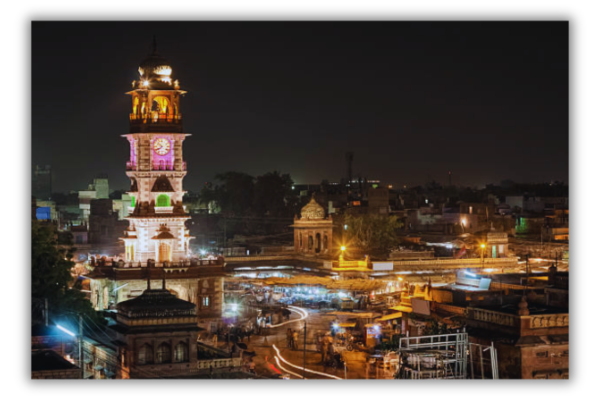

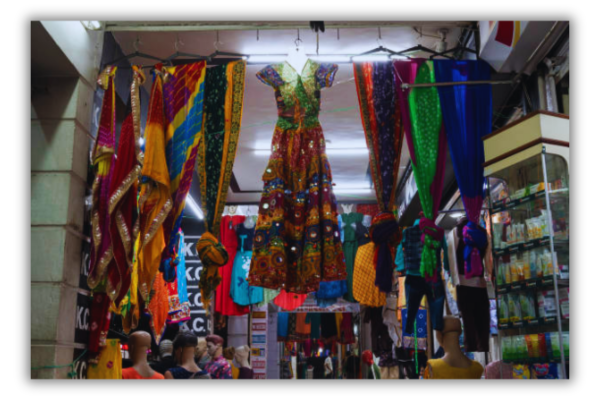
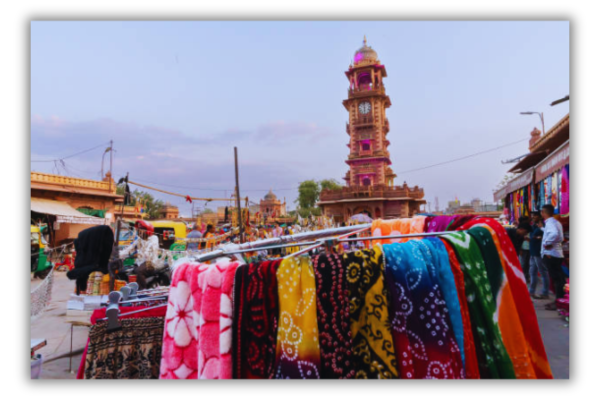
Key Attractions
1. Clock Tower (Ghanta Ghar)
Clock Tower, constructed by Maharaja Sardar Singh in the late 19th century, rises elegantly amidst the chaotic yet colorful streets of Jodhpur’s Old City. The tower itself is a fusion of Rajputana and Victorian architecture, topped with a large clock that continues to keep time for the city.
2. Sardar Market
Adjacent to the Clock Tower, Sardar Market is a bustling hub where locals and tourists converge to shop for a variety of goods. The market is renowned for its vibrant atmosphere and diverse offerings, including spices, handicrafts, textiles, traditional attire (such as bandhani sarees and juttis), jewelry, and more.
| • Timing: Market: | • Market: 9:00 AM to 9:00 PM; Clock Tower: Always visible |
| • Entrance Fee: | •prices vary for shopping. |
| • Location: | • City center, near the Old City area. |
| • Weather: | •Experience the bustling market atmosphere year-round; mornings offer the best shopping experience. |
| • Safety & Security: | • Safety & Security: Enjoy the vibrant market; keep valuables secure in crowds. |
6. Rao Jodha Desert Rock Park
- Rao Jodha Desert Rock Park stands as a testament to Jodhpur’s commitment to preserving its natural heritage amidst the arid landscapes of the Thar Desert. Established in 2006, this ecologically restored park spans over 70 hectares and showcases the region’s unique desert flora and fauna.
As you embark on a journey through the park’s winding trails, framed by rocky outcrops and native vegetation, you’ll encounter a diverse array of plant species adapted to the desert environment. The park is home to over 80 species of native plants, including the iconic desert date (Phoenix dactylifera) and the hardy Rohida tree (Tecomella undulata), which thrive in the harsh desert conditions.
One of the park’s highlights is its breathtaking views of Mehrangarh Fort, perched majestically on a nearby hill, providing a striking backdrop to the rugged terrain. Visitors can explore the park at their own pace or opt for guided tours that offer insights into its ecological significance and conservation efforts. Whether you’re a nature enthusiast, a photographer, or simply seeking solitude amidst nature, Rao Jodha Desert Rock Park offers a refreshing escape into Rajasthan’s natural wonders.
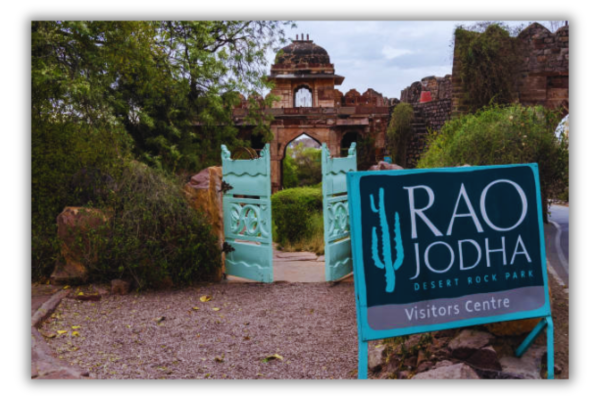
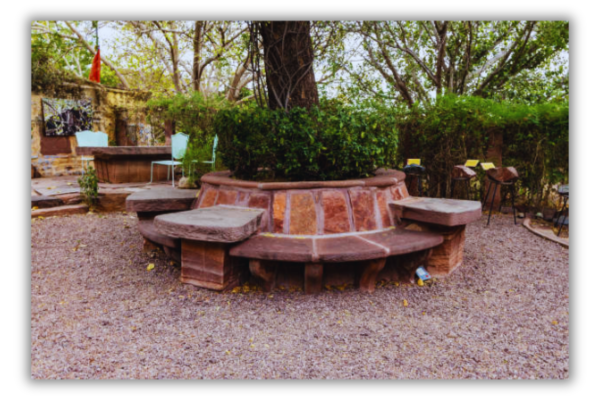
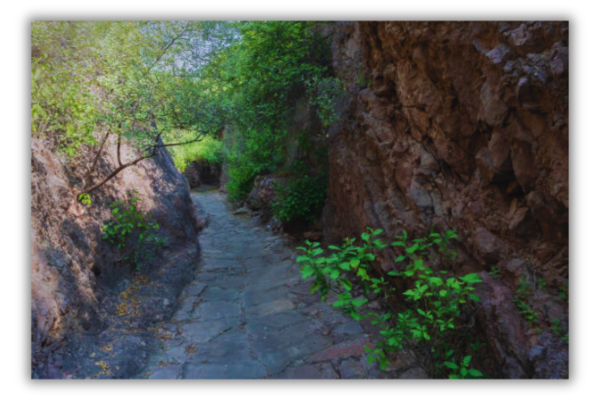
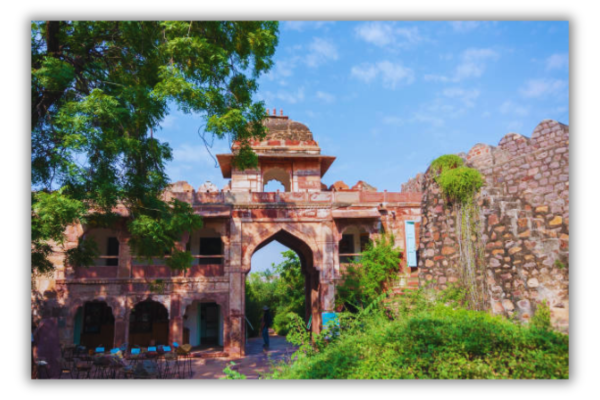
| • Timing: | • 8:00 AM to 6:00 PM |
| • Entrance Fee: | • INR 100-200 (approx.) |
| • Location: | • Near Mehrangarh Fort, accessible via Fort Road. |
| • Weather: | • Best visited in winter and early mornings or evenings due to desert heat. |
| • Safety & Security: | • Stick to marked trails; wear sturdy footwear for rocky terrain. |
- Toorji Ka Jhalra, an architectural marvel of the 18th century, stands as a testament to Jodhpur’s rich cultural heritage and engineering prowess. This intricately designed stepwell, once a vital source of water for the local community, is a striking example of Rajasthan’s traditional water conservation techniques.
As you descend the steps of Toorji Ka Jhalra, framed by ornate arched niches and intricate carvings, you’ll be transported to an era of grandeur and ingenuity. The stepwell’s symmetrical layout and geometric patterns reflect the meticulous craftsmanship of its builders, offering a glimpse into the past when such structures were integral to daily life in arid regions.
Today, Toorji Ka Jhalra serves as more than a historical relic—it’s a cultural hub where visitors can immerse themselves in the serenity of its surroundings. The stepwell’s cool waters and shaded alcoves provide respite from the city’s hustle and bustle, making it a favored spot for locals and tourists alike. Explore the stepwell’s depths, marvel at its architectural details, and appreciate its role in Rajasthan’s architectural heritage—a timeless testament to the region’s enduring traditions.
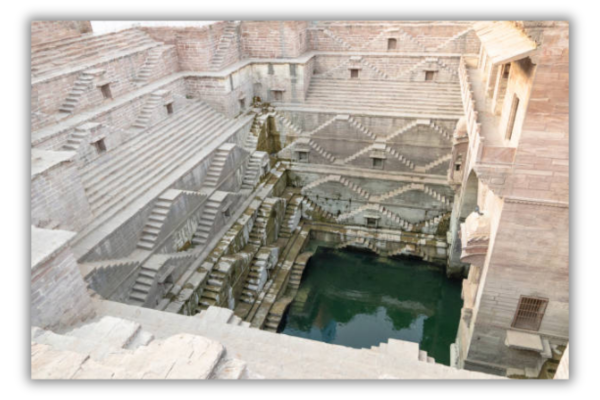
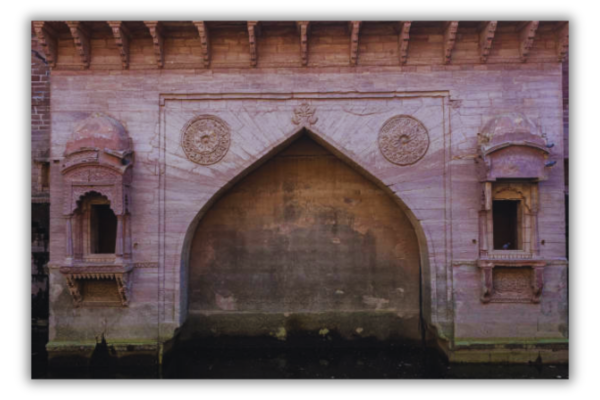
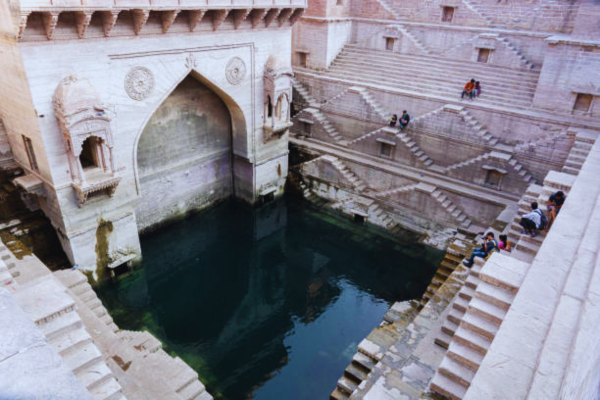
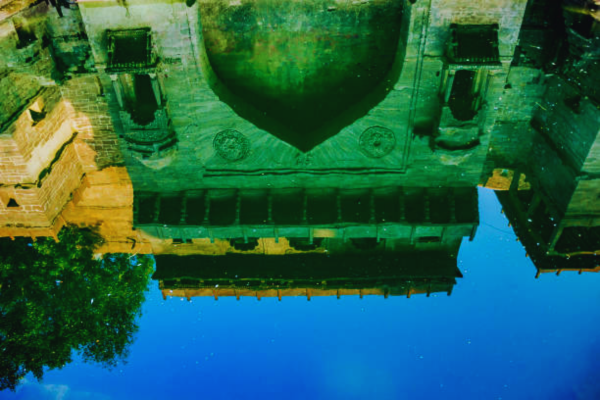
Key Attractions
1. Architectural Beauty
Toorji Ka Jhalra is renowned for its impressive architectural design, characterized by intricate carvings and geometric patterns on its walls. The stepwell descends several stories underground, showcasing the ingenuity of traditional Rajasthani craftsmanship.
2. Cultural Significance
In the past, stepwells like Toorji Ka Jhalra played a crucial role in water conservation and social interaction. They were not only practical sources of water but also served as meeting points for local communities and travelers passing through the city.
3. Revitalization and Restoration
In recent years, Toorji Ka Jhalra has undergone extensive restoration efforts to preserve its historical significance and architectural integrity. Today, it stands as a testament to Jodhpur’s rich cultural heritage and serves as a popular tourist attraction.
- Enhance your exploration of Mehrangarh Fort with the Mehrangarh Museum Trust Audio Guide Walk, a comprehensive tour that delves into the fort’s rich history, architectural marvels, and cultural significance.
The audio guide, available in multiple languages, offers a narrated journey through the fort’s sprawling complex, guiding visitors through its various palaces, courtyards, and galleries. As you follow the designated route, you’ll gain insights into the lives of the Rathore rulers, their military exploits, and the cultural patronage that shaped Mehrangarh’s legacy.
Highlights of the audio guide tour include detailed descriptions of key attractions such as Moti Mahal (Pearl Palace), Phool Mahal (Flower Palace), and the Darbar Takht (Courtroom). Each narration is enriched with anecdotes, legends, and historical contexts, providing a deeper appreciation of Mehrangarh Fort’s significance as a bastion of Rajput power and resilience.
The audio guide tour allows visitors to explore at their own pace, pausing to admire intricate details or capture panoramic views from the fort’s ramparts. Whether you’re a history buff, an architecture enthusiast, or simply curious about Rajasthan’s royal heritage, the Mehrangarh Museum Trust Audio Guide Walk offers an immersive experience that brings the fort’s history to life.
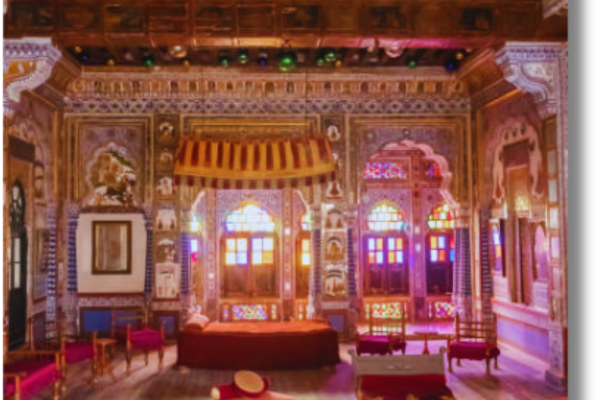

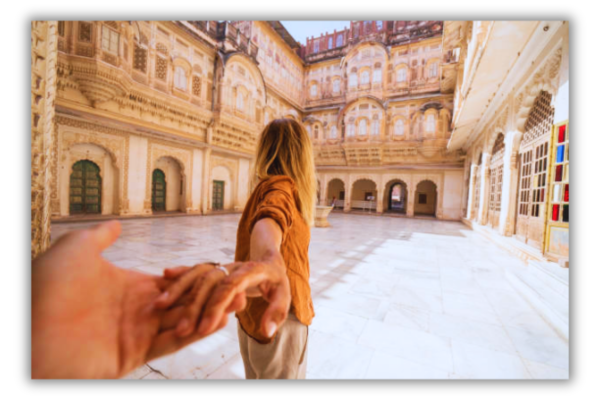

Key Features
1. Detailed Narration
The audio guide provides detailed narration in multiple languages, offering insights into the fort’s various sections, including palaces, courtyards, and museum exhibits. Visitors can learn about the lives of the Maharajas, historical events, and the intricate craftsmanship of the fort’s architecture.
2. Flexible Exploration
The audio guide allows visitors to explore Mehrangarh Fort at their own pace, stopping at points of interest and listening to informative commentary about each location. It enhances the visitor experience by providing contextual information and historical anecdotes.
3. Multilingual Support
Available in several languages, the audio guide caters to international visitors, ensuring a comprehensive understanding of Mehrangarh Fort’s cultural heritage and significance. It enriches the visit by bridging language barriers and facilitating a deeper appreciation of the fort’s treasures.
| • Timing: | • 9:00 AM to 5:00 PM (same as Mehrangarh Fort timings) |
| • Entrance Fee: | • Included in Mehrangarh Fort ticket. |
| • Location: | • Mehrangarh Fort premises, available at the entrance. |
| • Weather: | • Enjoyable year-round; clear audio during morning hours. |
| • Safety & Security: | •Follow fort guidelines; audio equipment provided securely. |
- Embark on a transformative journey into rural Rajasthan with the Bishnoi Village Safari, offering a glimpse into the vibrant culture and eco-friendly practices of the Bishnoi community.
The safari takes you through picturesque Bishnoi villages, where traditional huts (“dhani”) and vibrant attire reflect the community’s deep-rooted customs and beliefs. Meet local artisans practicing age-old crafts such as pottery and weaving, and witness women adorned in colorful attire carrying out daily chores amidst the arid landscape.
A highlight of the safari is encountering wildlife in its natural habitat, including the endangered blackbuck antelope, which roams freely in the Bishnoi villages. Learn about the Bishnoi community’s reverence for nature and wildlife conservation efforts, which have preserved the region’s biodiversity for centuries.
Throughout the safari, knowledgeable guides provide insights into Bishnoi traditions, cultural rituals, and the community’s harmonious coexistence with the environment. Visit the Khejarli Memorial, commemorating the sacrifice of Bishnoi men and women who laid down their lives to protect trees from being felled—an inspiring testament to Rajasthan’s rich cultural heritage and spirit of conservation.
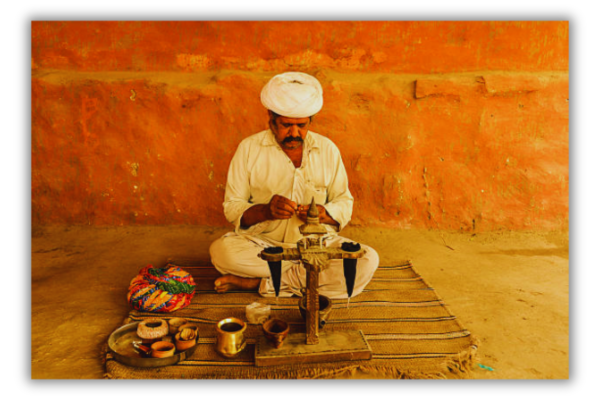
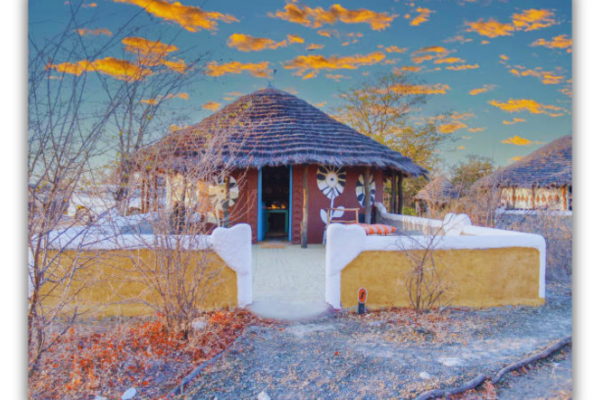
Key Experiences
1. Cultural Immersion
The Bishnoi Village Safari offers an opportunity to interact with the Bishnoi people and learn about their customs, traditions, and sustainable way of life. Visitors can witness traditional handicrafts, visit local homes (huts known as ‘kothas’), and observe daily activities like weaving and pottery.
2. Wildlife Encounters
Explore the biodiversity of the region, known for its rich flora and fauna. The safari often includes visits to wildlife habitats where you can spot endangered species like blackbucks, chinkaras (Indian gazelles), and various bird species in their natural habitat.
3. Conservation Efforts
Learn about the Bishnoi community’s deep-rooted conservation ethos, which includes protecting wildlife and preserving the environment. The safari highlights their efforts in sustainable farming, water conservation, and maintaining harmony with nature.
| • Timing: | • Morning and afternoon tours available |
| • Entrance Fee: | • Tour packages vary; includes transportation and guide. |
| • Location: | •Bishnoi villages near Jodhpur, accessible via guided tours. |
| • Weather: | • Best enjoyed in winter; experience traditional Bishnoi lifestyle and wildlife conservation efforts. |
| • Safety & Security: | • Respect local customs; stay with the group during the safari. |
- Immerse yourself in the natural beauty of Rajasthan’s wilderness with a safari at Machiya Safari Park, offering thrilling encounters with diverse wildlife amidst breathtaking landscapes.
Machiya Safari Park, located near Jodhpur, is a haven for nature enthusiasts and wildlife photographers seeking glimpses of Rajasthan’s unique flora and fauna. The park’s expansive grasslands and scrub forests provide habitat to a variety of species, including the majestic blackbuck antelope, elusive desert foxes, and vibrant birdlife.
Guided jeep safaris through Machiya Safari Park offer unparalleled opportunities to observe wildlife in their natural habitat, with knowledgeable guides providing insights into the region’s ecological significance and conservation efforts. Capture panoramic views of the Thar Desert and Aravalli hills while keeping a lookout for sightings of the Indian gazelle (chinkara), striped hyena, and resident and migratory bird species.
Beyond wildlife encounters, Machiya Safari Park offers a tranquil escape into Rajasthan’s untamed wilderness, where the rustle of dry leaves and the call of birdsong create a symphony of natural sounds. Whether you’re exploring on a sunrise safari or soaking in the golden hues of sunset, Machiya Safari Park promises unforgettable moments amidst Rajasthan’s pristine landscapes.

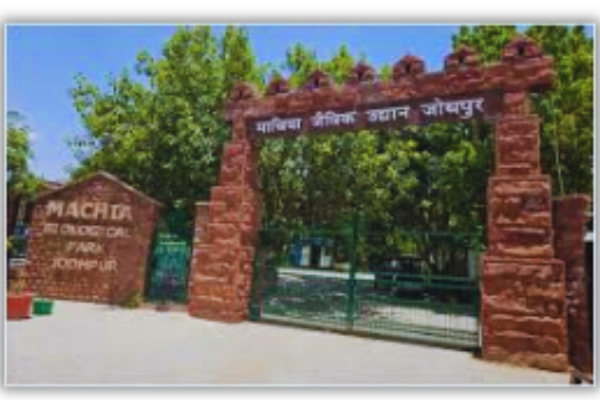

1. Wildlife Safari

2. Nature Trails
| • Timing: | • Safari timings vary; morning and afternoon slots available. |
| • Entrance Fee: | • INR 100-200 (approx.) for safari tours. |
| • Location: | • Machiya village, accessible via guided safari tours. |
| • Weather: | • Ideal during winter months; observe blackbucks, desert foxes, and migratory birds. |
| • Safety & Security: | • Follow park regulations; guided tours ensure safe wildlife viewing. |
Jodhpur: Distance from Other Cities-
| City | Distance from Jodhpur (Approx.) | Travel Time (By Road) | Travel Time (By Rail) |
|---|---|---|---|
| Jaipur to Jodhpur Distance | 338 km / | 5-6 hours | Varies |
| Udaipur to Jodhpur Distance | 260 km / | 4-5 hours | Varies |
| New Delh to Jodhpur Distance i | 600 km / | 10-12 hours | Varies |
| Mumbai to Jodhpur Distance | 1,000 km / | 16-18 hours | Varies |
| Ahmedabad to Jodhpur Distance | 450 km / | 7-8 hours | Varies |
Travel Tips:
- Book train tickets in advance, especially during peak seasons, and check the train schedule for departure and arrival times.
- Book flights early for better fares, and arrive at the airport well in advance to complete security and check-in procedures smoothly.
- Plan road trips during daylight hours, carry sufficient water and snacks, and check for road conditions and diversions


